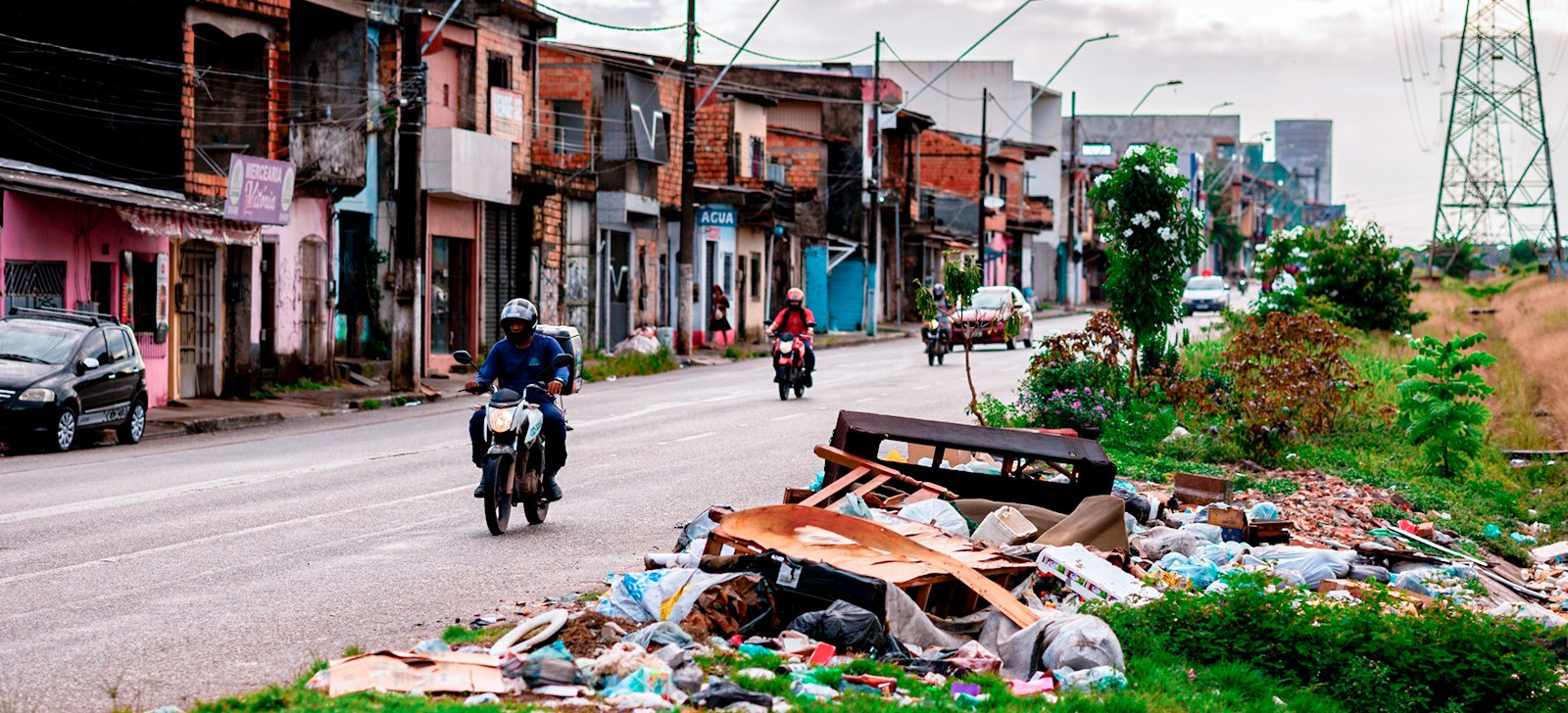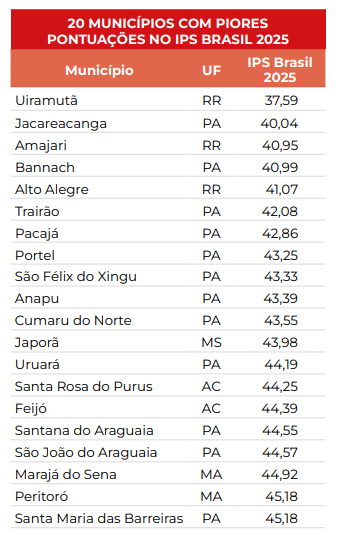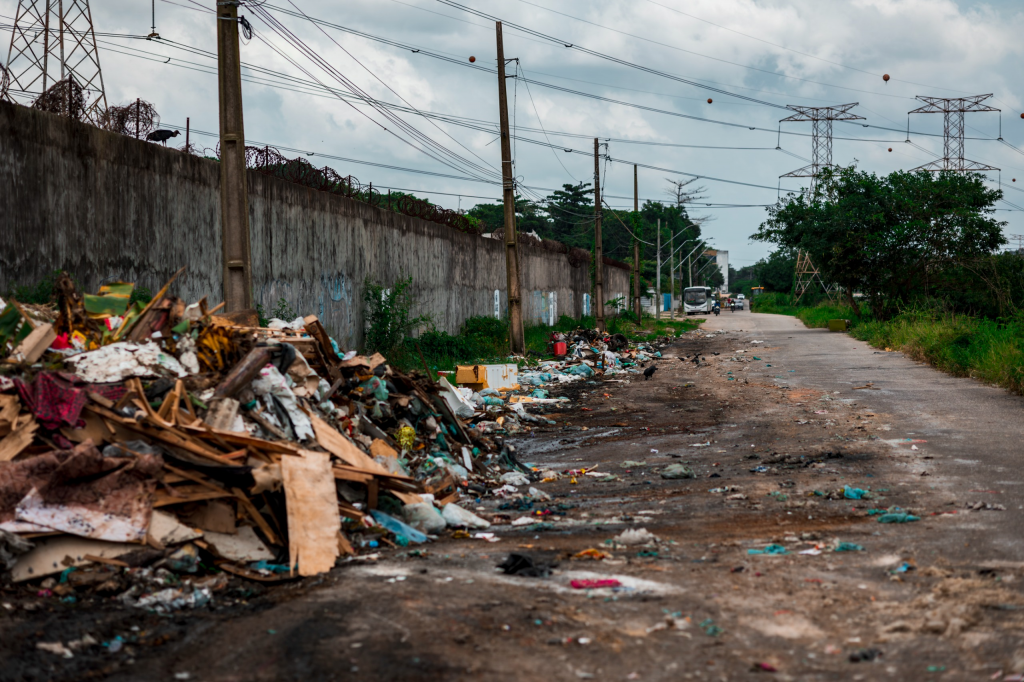Pará concentrates cities with the worst social progress in Brazil
01 de June de 2025

By Fernanda Ribeiro – From Cenarium
MANAUS (AM) – The Social Progress Index Brazil (IPS) released this Thursday, the 29th, the second edition of the Social Progress Index. The unprecedented analysis covered all 5,570 municipalities in Brazil based on 57 social and environmental indicators. The results of the study reveal a concerning scenario for Pará: 12 of the twenty cities with the lowest scores in the national ranking are located in the state.
The IPS evaluates the performance of municipalities in essential pillars such as: basic human needs, foundations for well-being, and opportunities, highlighting the vulnerabilities faced by residents of cities in Pará such as: Jacareacanga, Bannach, Trairão, Pacajá, Portel, São Félix do Xingu, Anapu, Cumaru do Norte, Uruará, Santana do Araguaia, São João do Araguaia, and Santa Maria das Barreiras. See:

The data shows that Pará not only concentrates a large number of municipalities with low social progress indices, but also ranks at the bottom across different population size categories. Among municipalities with up to 5,000 inhabitants, Bannach (PA) ranks as the worst performer in Brazil, with an IPS of 40.99. Other cities in Pará within this category do not appear among the ten worst in the ranking, but the presence of Bannach already signals the seriousness of the situation.
“The selection of indicators for each component follows strict criteria according to the global IPS methodology. The criteria for selecting indicators are: 1) being social or environmental; 2) measuring outcomes; 3) having a reliable and public source (secondary data); 4) being recent data (maximum 5 years); and 5) being available for all or almost all territories (95% – 100%),” the report states.

The reality is no different for municipalities with populations between 5,000 and 20,000 inhabitants. Trairão (PA) and Cumaru do Norte (PA) are among the worst performers in the country, with scores of 42.08 and 43.55, respectively. São João do Araguaia (PA) and Santa Maria das Barreiras (PA) also stand out negatively, solidifying the state’s presence among the areas with the lowest social progress.
When analyzing municipalities with 20,000 to 100,000 inhabitants, Pará once again leads the worst rankings. Jacareacanga (PA) registers the worst IPS in Brazil for this range, with 40.04 points. Following are Pacajá (PA), Portel (PA), São Félix do Xingu (PA), Anapu (PA), and Uruará (PA), all with scores below 45. Santana do Araguaia (PA) is also included in this list.
Even in categories with larger populations, the situation in Pará remains delicate. Among municipalities with 100,000 to 500,000 inhabitants, cities such as Altamira (PA), Breves (PA), Itaituba (PA), Bragança (PA), Marabá (PA), Cametá (PA), Castanhal (PA), and Abaetetuba (PA) appear among the ten worst performers in the country. And, in the group of municipalities with over 500,000 inhabitants (excluding capitals), Ananindeua (PA) ranks as the city with the worst IPS in Brazil, scoring 56.19 points.
See the full study:
Comparison with 2024
Although the specific IPS 2024 data for each municipality has not been detailed, the recurrence of twelve cities from Pará among the twenty with the worst quality of life in 2025 points to a persistence of social and economic challenges in the region. The results of the study indicate that the interventions and public policies implemented between the two years were not sufficient to reverse the precarious conditions of these municipalities.
The finding that the state concentrates a large portion of the cities with the worst social progress indices across various categories could serve as a warning sign to authorities and society. The report calls for action in areas such as life quality, health, education, basic sanitation, and economic opportunities in these localities, in order to reverse this scenario and promote more equitable and sustainable development in the state.
COP30
The state is set to host the 30th UN Conference on Climate Change (COP-30), scheduled for November this year. In May, the governor of Pará, Helder Barbalho (MDB), stated that Belém is receiving an investment of approximately R$ 5 billion in infrastructure for the realization of COP-30.
Of this total, R$ 3 billion will be executed this year and up to R$ 2 billion in 2025. The lack of investments in projects directly related to traditional communities was one of the criticism points during the preparations for COP-30.
“Belém does deserve investments, but they should pay more attention to those who truly protect the forest. The city has already hosted the World Social Forum, the Amazon Summit, and nothing changed for us. Doca is going to receive a piece of Paris, Estação das Docas will become a fancy hotspot. These are megalomaniac projects that don’t impact the daily life of those who preserve the forest, while we are sustaining Amazonian biodiversity with a lot of effort,” highlighted Raimundo Magno, leader of the Quilombola Association África e Laranjituba.

